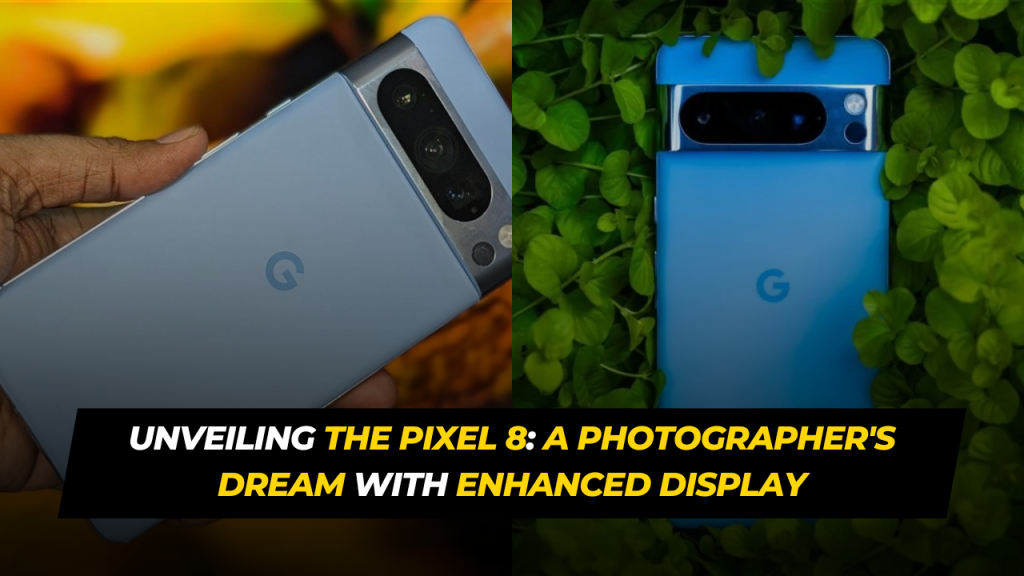In the realm of smartphone photography, Google’s Pixel 8 and 8 Pro stand tall, redefining the possibilities. Recently, Adobe announced an update that elevates the Pixel 8’s prowess further by introducing RAW support for Lightroom and Photoshop. This development extends the creative horizon for photography enthusiasts, enhancing the editing capabilities for those who seek more than what the standard Google Photos app offers.
Photographers understand the significance of capturing images in RAW format. It’s a pathway to gathering an extensive range of data within an image, providing flexibility in refining every detail. While the Pixel 8 series already sets a benchmark for mobile photography, Google’s exceptional post-processing, coupled with Adobe’s RAW support, takes the potential a notch higher.
This update allows Lightroom and Photoshop to seamlessly recognize RAW files from the Pixel 8 and 8 Pro, now available in DNG format. Notably, the support extends to different lenses on these devices. For the Pixel 8, RAW compatibility spans the front-facing camera, wide-angle lens, and main sensor. On the Pixel 8 Pro, this extends to images captured through the telephoto lens, showcasing Adobe’s commitment to optimizing photo editing across all lenses.
To leverage this enhancement, ensuring your Adobe programs are updated to a minimum version of 16.0.1 is imperative. This integration between Pixel 8’s powerful camera capabilities and Adobe’s editing software opens new avenues for creators, enabling them to delve deeper into post-processing and image refinement.
Beyond the realm of photography lies the Pixel 8’s revamped display – an aspect that embodies a meeting of innovation and refinement. Google introduces its “Super Actua” display for the Pixel 8 Pro, a label that accompanies several noteworthy improvements.
The screen design now boasts a flat yet subtly tapered form factor, embracing a 20:9 aspect ratio while maintaining the device’s size. This year, there’s a slight reduction in pixel density, yet it remains imperceptible at full resolution, catering to efficiency and durability.
Google’s choice in this adjustment might aim to strike a balance between pixel size, efficiency, and resistance to burn-in, evident in the Pixel 8 Pro’s unconventional 1344×2992 resolution. Moreover, the switch to E7 OLED material from Samsung Display represents a remarkable leap in brightness and power efficiency, elevating the Pixel 8 Pro’s display capabilities significantly.
The Pixel 8 Pro’s display, now reaching up to 2,400 nits peak brightness, signifies a substantial leap forward. While real-world measurements might slightly differ from advertised figures, achieving almost 1,500 nits in full-screen brightness remains a testament to its prowess. Enhanced power management further optimizes display efficiency, contributing to improved battery performance.
Color accuracy and performance enhancements further solidify the Pixel 8 Pro’s display as a standout feature. Google’s commitment to offering a spectrum of display profiles, including Adaptive and Natural, cater to both vibrancy enthusiasts and those seeking precise color reproduction.
The HDR capabilities of the Pixel 8 Pro expand the dynamic range for both photos and videos, offering an immersive visual experience. Google’s effort in supporting HDR content showcases its dedication to delivering vibrant and realistic visuals.
In conclusion, the Pixel 8 series stands as a testament to Google’s commitment to innovation. The synergy between enhanced photography capabilities and an evolved display elevates the Pixel 8 and 8 Pro to the apex of smartphone technology, promising an unparalleled experience for photographers and enthusiasts alike.

